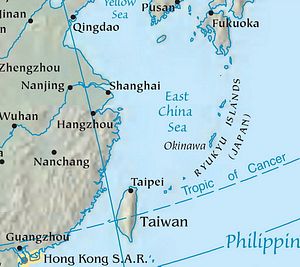It’s a shame that relations between Japan and China have deteriorated so sharply in recent years. Perhaps no dispute highlights this deterioration better than the territorial spat over the sovereignty of the Senkaku/Diaoyu Islands — a favorite topic for many of us writing here at The Diplomat. For the moment, high-level diplomacy between China and Japan is effectively non-existent and will likely remain so as long as Shinzo Abe remains in charge in Tokyo. His reputation as an ardent Japanese nationalist is unpalatable to Chinese leaders who perceive him as out to revise Japan’s post-war pacifist constitution and normalize Japan’s military posture to the detriment of Chinese interests in the region.
The Senkaku/Diaoyu conflict, however, in reality was not borne of Abe. The nationalization of the islands was one of the final acts of the Democratic Party of Japan’s Prime Minister Yoshihiko Noda during his last months in office. Noda purchased the islands, upsetting the careful de facto balance of ambiguous sovereignty that China and Japan had enjoyed for years. Sure, an earlier incident in 2010, when a Chinese fishing boat collided with Japanese coast guard caused a major diplomatic row, resulting in a temporary Chinese embargo on rare-earth metal exports to Japan, but the dispute was not a constant source of tension between the two countries. In those days, Chinese and Japanese diplomats were able to make progress on other issues, unencumbered by the territorial dispute.
Noda’s purchase of the islands was well-intentioned. He nationalized the islands to prevent the ultra-nationalist Shintaro Ishihara, then the governor of Tokyo, from purchasing the islands and carrying out Japanese construction projects there to project sovereignty. Noda figured that the purchase would actually preserve the status quo but he was unfortunately wrong. The shift from de facto to de jure sovereignty has led to over 18 months of tension between China and Japan — tension that was aggravated when Shinzo Abe came to power in December 2012.
There have been a few solutions proposed for resolving the Senkaku/Diaoyu dispute between Japan and China. One solution that comes to mind was proposed by Singapore’s Kishore Mahbubani, who has argued that what Japan must do is “return to the status quo ante,” by selling the islands to “a private Japanese foundation or environmental group, ostensibly to preserve their undeveloped natural beauty.” Presumably, this would lead to state of affairs where neither Japan nor China would have a strong de jure claim to the islands.
In my view, the matter isn’t that simple. It’s not about ownership, but about state preferences. Currently, the Senkaku/Diaoyu islands exist as a zero sum preference proposition. Japan owns them, but China wants to own them — the islands can only exist in one of those states of ownership, so there necessarily has to be a loser in this game. What was unique about the status quo ante was that preferences were effectively positive sum. The state of the islands was such that both Chinese and Japanese leaders could remain content — or if not content, tolerant — of the sovereign status of those territories, even if they’ve were technically under dispute. Neither side grumbled publicly about the state of the islands (at least not as regularly as today).
A return to that status quo ante today seems incredibly unlikely. Regarding China’s current policy towards the East China Sea, including its imposition of an air defense identification zone last November, we see that the only “win condition” possible for Beijing with regard to the dispute is an acknowledgment by Japan and the international community that the Diaoyu islands are sovereign Chinese territory. Additionally, where the dispute was once a relative footnote in China-Japan relations, it is today a central topic — so much so that any concession by either China and Japan on the islands would amount to a massive public relations defeat with important ramifications for those countries’ relations with other states in the region. What makes resolving the conflict even more difficult today is that neither side is willing to treat the issue as a divisible one with non-polarized outcomes — again, either China owns the islands or Japan does. There is no middle ground.
In the same piece where Mahbubani makes the case for Japan re-privatizing the islands, he mentions that Japan could offer China a way out in the form of having the International Court of Justice (ICJ) adjudicate the final status of the islands. While that isn’t ideal either (since one side would lose face in such a judgment), it is closer to a tenable solution if it resulted in some sort of positive sum and divisible sovereignty-sharing arrangement, where both Japan and China are able to claim the islands and exploit its resources.
Despite the wide availability of scholarly models for resolving disputes, international relations in the real world play out rather inelegantly, almost always resulting in winners and losers. Neither China nor Japan is ready to take any steps at this point that would allow for a mutually acceptable resolution of the dispute. That’s why I fear that the Senkaku/Diaoyu islands will continue to remain high on the list of the Asia-Pacific’s potential flashpoints for some time to come.

































